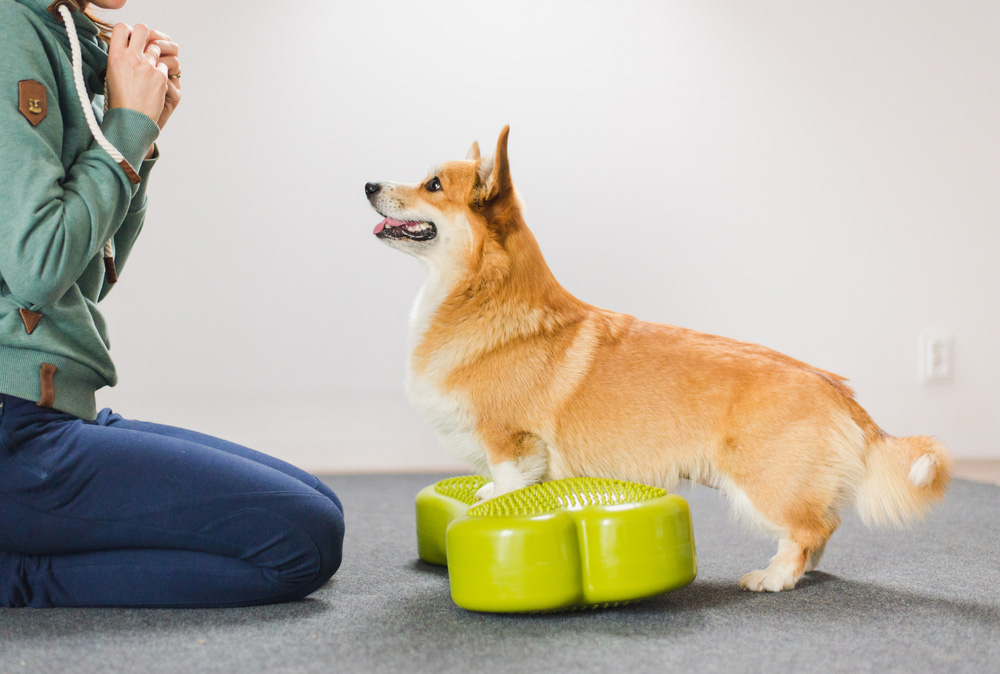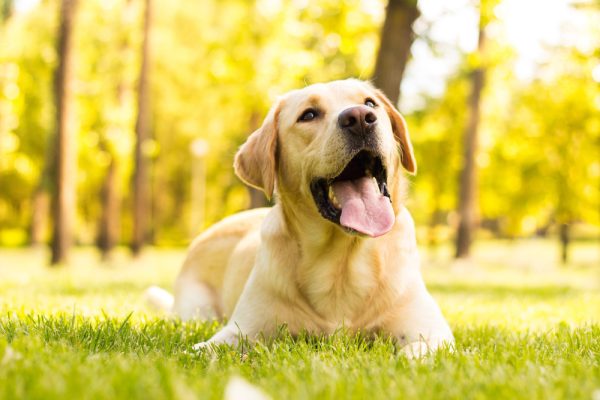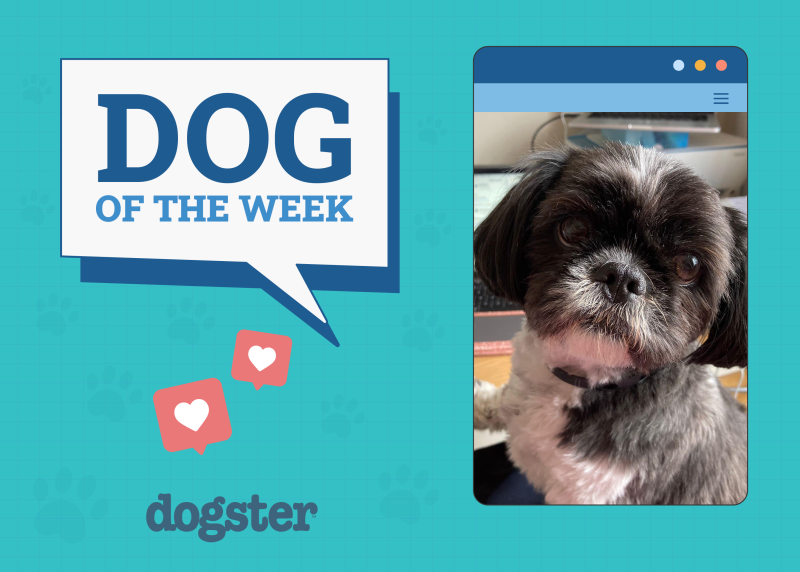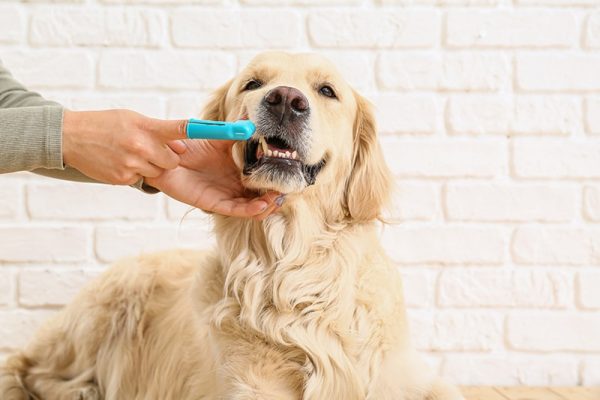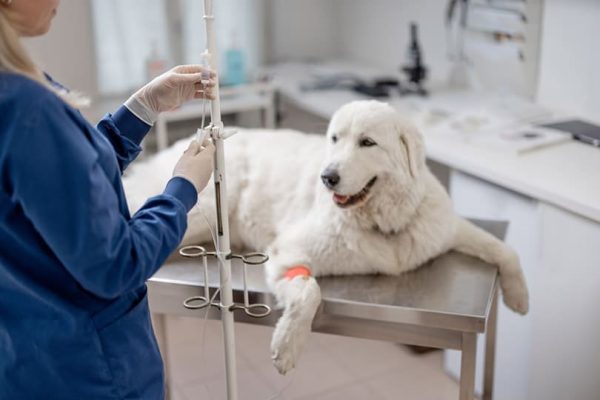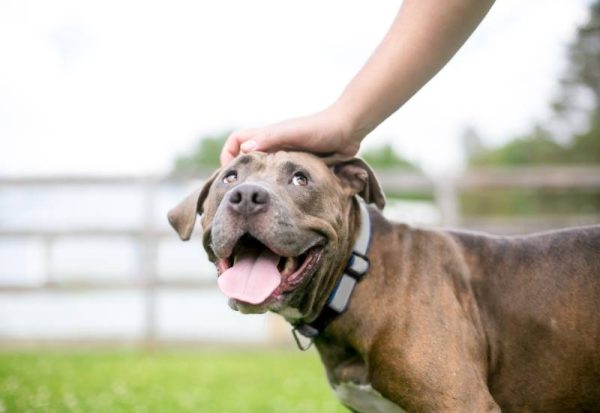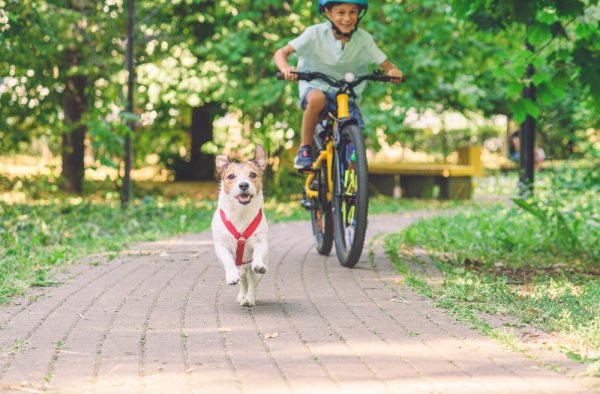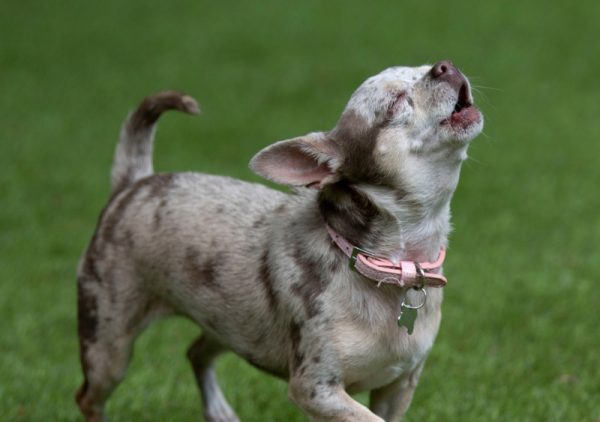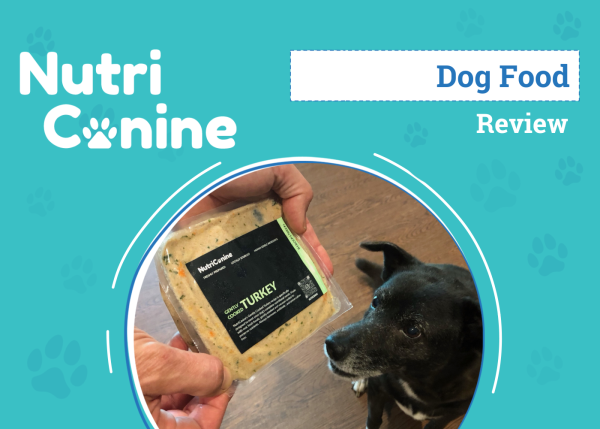We all know what it’s like to get a little stir-crazy after being stuck in the house because the weather is bad. Our dogs aren’t immune to feeling this way either! They get bored being cooped up in the house, and for many dogs, their need for daily exercise isn’t met when they’re stuck indoors.
There are multiple ways you can work to tire your dog out and meet their exercise needs without leaving the house, though. While these aren’t ideal for daily exercise, these exercises are great in a pinch.

The 12 Indoor Exercises for Dogs
1. Stair Games
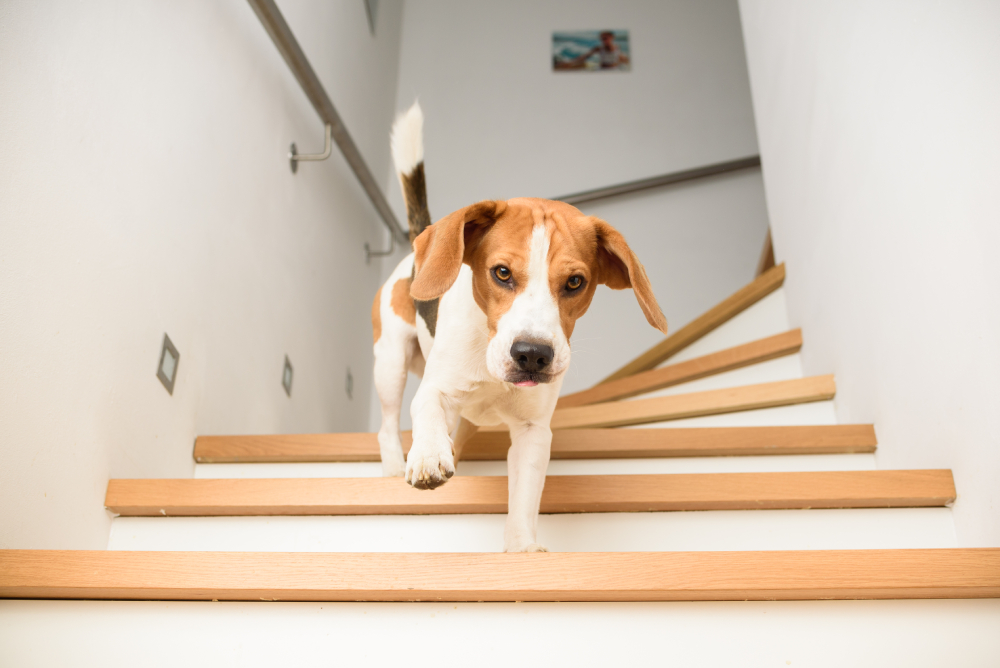
If you have a flight of stairs in your home, then you can use them as the base for a variety of games. Going up the stairs, whether it’s in pursuit of a toy or looking for a treat, is an effective way to get exercise quickly and burn energy. You can hide small treats on the stairs for your dog to find, play fetch up the stairs, and even leash walk them up and down the stairs.
Just be aware that going up and down stairs can put a lot of strain on your dog’s joints, especially their shoulders and elbows. If your dog is older or is prone to joint problems, it’s best to skip these games. You should also aim to play games that allow your dog to take their time coming down the stairs to prevent joint strain and reduce the risk of tripping.
2. Hide and Seek
Hide and seek is a classic game that you can play with your dog, and it’s simple enough that everyone in the family can join the game. All you need to do is hide in a room while you command your dog to stay in another, and then call your dog to come to find you.
If your dog won’t stay in place while you go hide, you may need a second person to distract the dog while you hide. Another fun version of hide and seek you can play with your dog involves hiding things that they’re interested in, like a favorite toy or some treats.
3. Nose Work
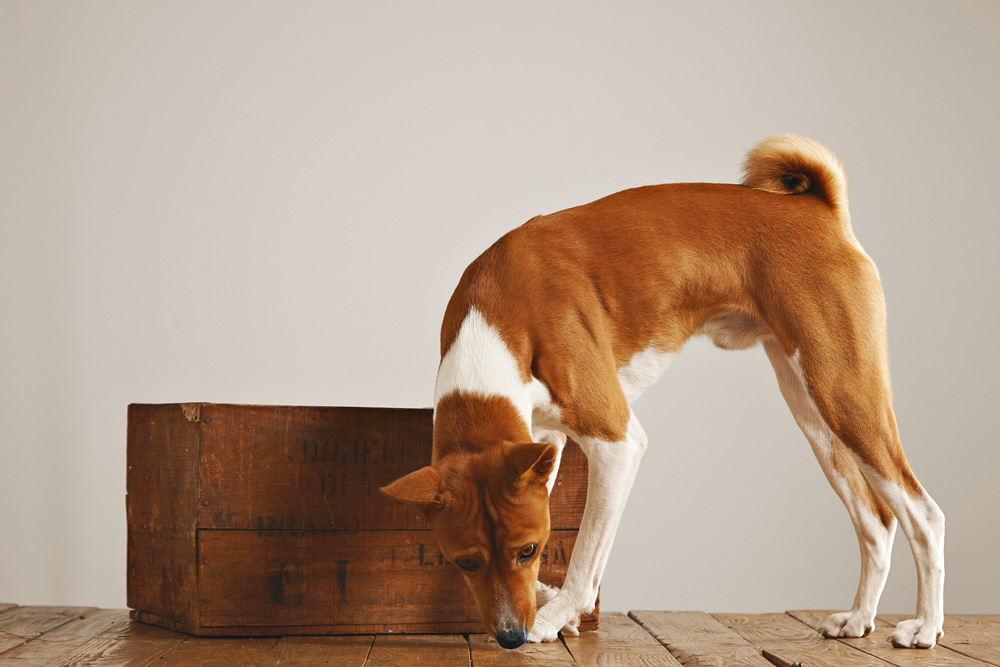
Nose work is an enriching activity that will work your dog’s body and brain. It can be done indoors or outdoors, making this a fun activity whether you’re stuck in the house or not. Nose work involves your dog seeking things out based on their scent. The simplest version of nose work involves hiding treats or food for your dog to find. If your dog is motivated by food, then they’re likely to love playing this game.
You can train your dog to detect specific scents, though, allowing you to hide non-food objects around your home and have your dog search for them. You can purchase kits that come with a few strong scents that are likely novel to your dog, making them interesting and easy to use for training. Some people do nose work just for fun, but if your dog is really good at it, they may have a promising career as a sniffer dog or search and rescue dog.
4. Fetch
We all know how to play fetch indoors or outdoors. When you’re stuck in the house, you want to find a spot in your home that has plenty of space and nothing breakable nearby that might fall victim to a flying toy or a running dog. Long hallways and open floor plans are both good options for indoor fetch games.
To increase your pup’s interest in this game, you can reserve specific toys only for fetch, so when the toy comes out, your dog will know that it’s time for a game of fetch.
5. Play Tug of War
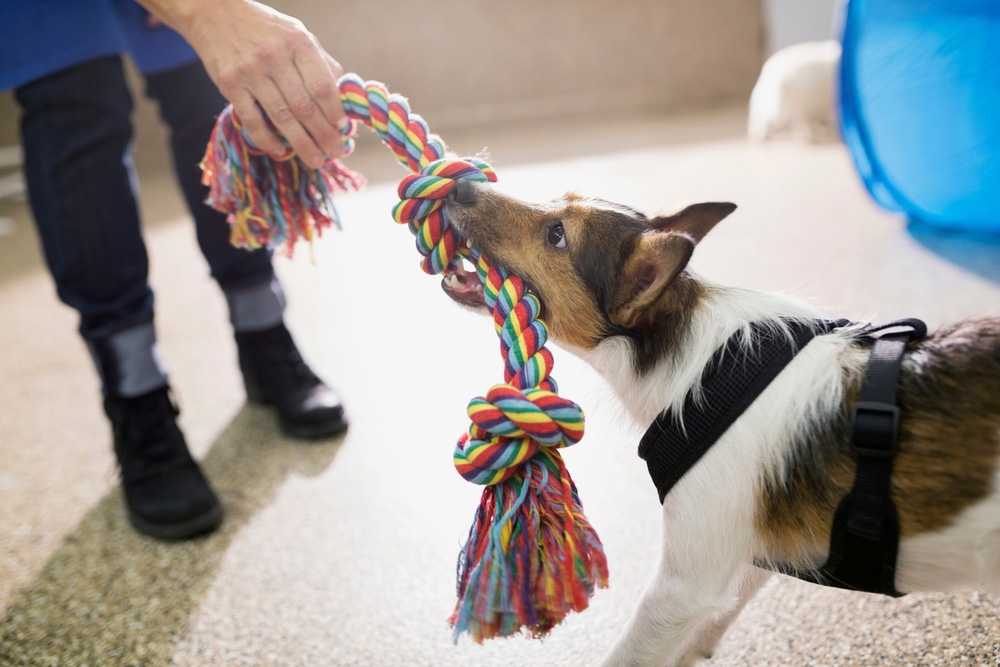
Many dogs love a game of tug and it can be a great way to release pent up energy indoors if you play it safely. Your dog should already know a release command to end the game such as “drop” before you play. This means you can easily stop the game if your dog gets over excited and before it gets out of hand. Have specific toys that you use for tugging and make sure they are solid and durable.
6. Puzzles
There are a ton of food puzzles for dogs on the market now, and puzzles are an excellent source of enrichment for dogs. You can feed your dog their meals in food puzzles, or you can provide them with treats this way. Lick mats, stuffable toys, and food puzzles are all good options for entertaining your dog in a way that immediately rewards them with food. You can even freeze some of these puzzles to make them more complicated for your dog to solve, which will use more of their energy.
7. Obstacle Course
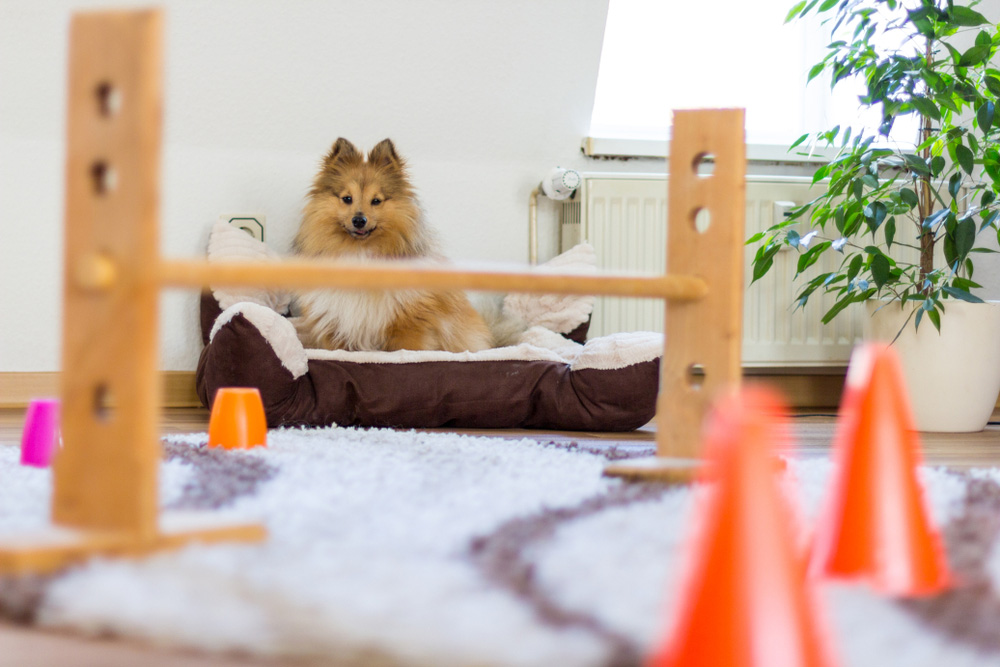
An obstacle course is a good way to encourage your dog to move and burn energy without them needing to move quickly. This makes obstacle courses a little more forgiving for smaller spaces. You can create obstacle courses from cardboard boxes, broom handles, hula hoops, PVC pipe, and wood blocks, just to name a few of the items you might already have around your house.
Since it may take a few tries for your dog to understand the purpose of the obstacle course, you can also create one obstacle and work to train them how to master it. For example, you can create a jump with a broom handle or hula hoop. Once your dog understands the concept of jumping over or through the object, you can raise the object higher and make the obstacle more physically involved. Keep in mind, though, that this game may be best for smaller dogs and make sure the flooring is non-slip.
8. Chase
Your parents always told you not to run in the house, but now that you have your own home, you get to set your own rules. If you have enough space, a rousing game of chase can be a fun and interactive way for you and your dog to get some exercise. Simply run around your home, encouraging your dog to chase you as you go. You can also combine this game with other games, like hide and seek.
9. Mobility and Balance Exercises
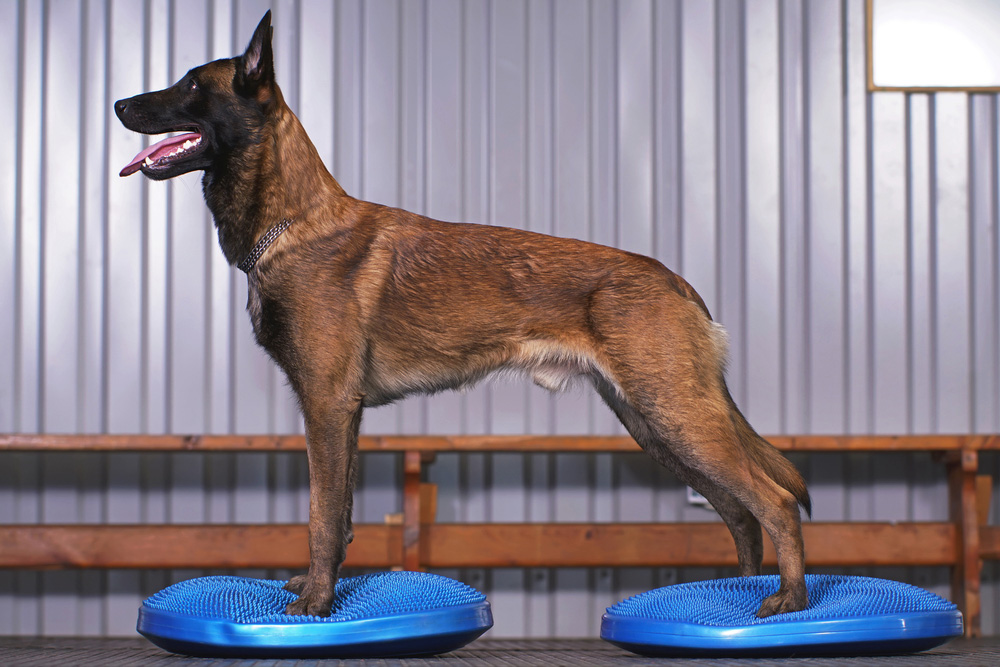
There are a lot of excellent resources available online to teach you how to train your dog to do balance and mobility exercises. These exercises involve training your dog to move or stand in specific ways that challenge certain muscle groups. Think of it like going to the gym but for your dog.
Not only are these exercises effective at burning energy, but they also can help to teach your dog improved proprioception (understanding where their body is in space) and build functional muscle. This can allow your dog to do certain things more safely, reducing their risk of injury. Canine physical therapists and other people with highly specialized training can teach you how to properly perform these exercises in a way that is safe and effective for your pup.
If you are concerned about your dogs mobility, we suggest you speak with a vet.
If you need to speak with a vet but can't get to one, head over to PangoVet. It's an online service where you can talk to a vet online and get the personalized advice you need for your pet — all at an affordable price!

10. Snuffle Mat
Snuffle mats are mats, often made of felt, that have a variety of shapes and textures on them, allowing you to put your dog’s dry food on the mat. Your dog will then have to “snuffle” through things like felt strips, pockets, and flaps to get to their food. Snuffle mats can often be used as an alternative option to a slow feeder bowl.
You can purchase snuffle mats at most pet stores, but if you’re a little bit crafty, you can also make your own at home using scrap fabric and other craft supplies you have on hand. Make sure to avoid anything small enough for your dog to swallow, and always supervise your dog when they’re using a snuffle mat to ensure they don’t tear the mat up or consume pieces of it.
11. Training Sessions
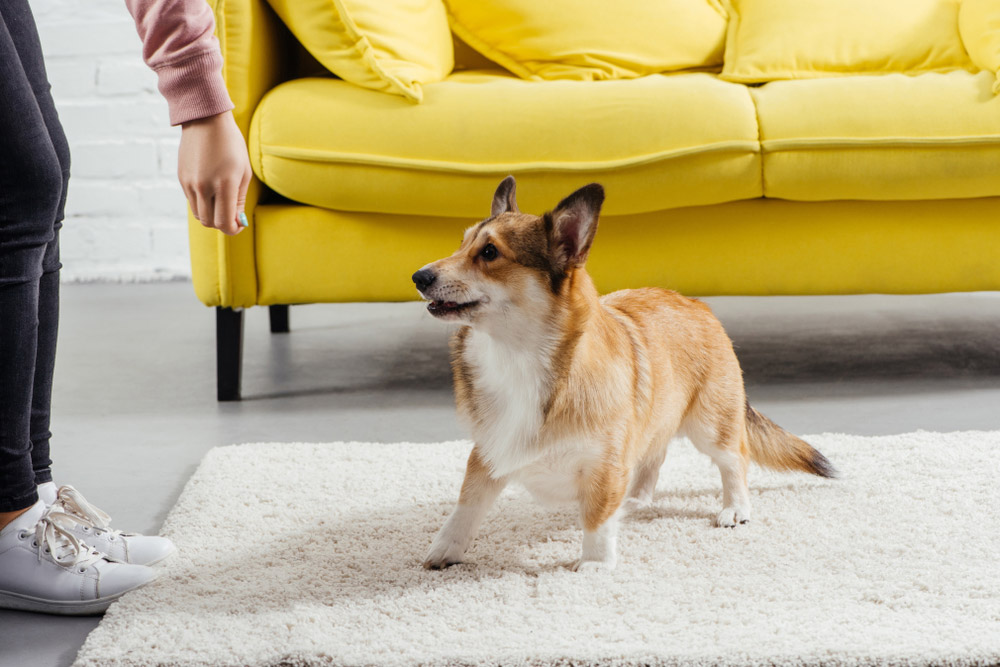
Training a new trick or solidifying your dog’s mastery of a command they already know are awesome options for helping your dog burn energy indoors. Training sessions require some physical involvement, helping your dog to move and work their body. They also require brain power, which provides an enriching experience for your dog.
On top of those benefits, active training sessions with your dog can serve to enhance your relationship through trust-building and positive reinforcement.
In many cases, it’s best to keep training sessions relatively short—typically only 10–20 minutes. If training sessions are too long, your dog may lose interest and stop performing the command appropriately.
12. Using Novel Items
A fun trick to have up your sleeve for days when you’re stuck indoors is to have a stash of interesting items that are novel to your dog. These can be new toys, old toys your dog hasn’t seen in a while, and objects that might be of interest to your dog, like clothing items that smell like people they love.
Depending on the items, this may or may not lead to exercise for your dog. However, introducing items that are interesting to your dog can provide enrichment and encourage physical movement while they explore the items. You can introduce these items one at a time if you’d like, but some people prefer to simply dump all of the interesting items in the middle of the room, allowing their dog to explore the objects at their own pace.

Conclusion
A sedentary lifestyle is just as dangerous for your dog as it is for you. It’s important to your dog’s physical, mental, and emotional health to get daily movement. When getting exercise in the great outdoors isn’t an option, you may have to get creative to find ways to get your pup moving indoors. There are tons of options for keeping both of you entertained whenever you’re cooped up in the house, though!
Featured Image Credit: Jus_Ol, Shutterstock
